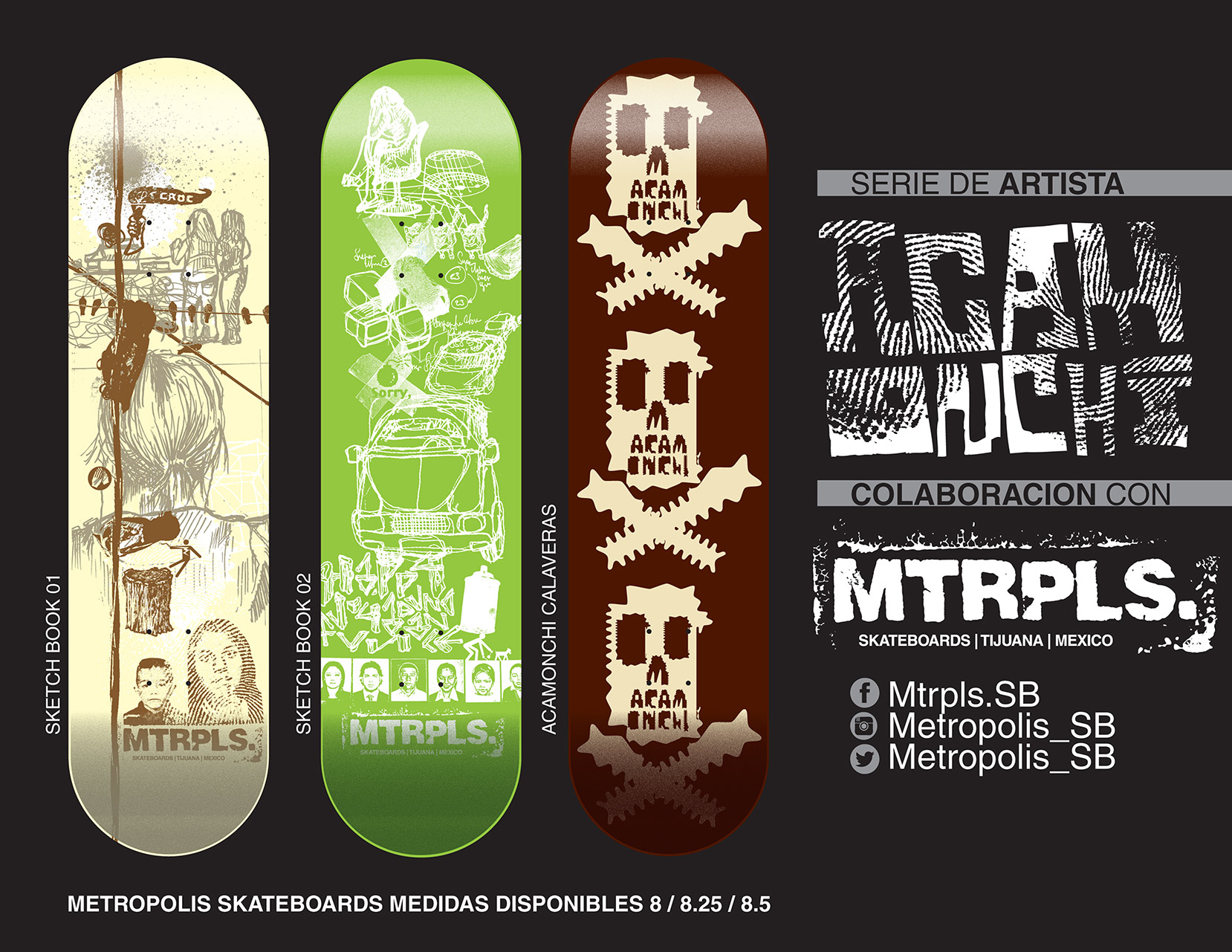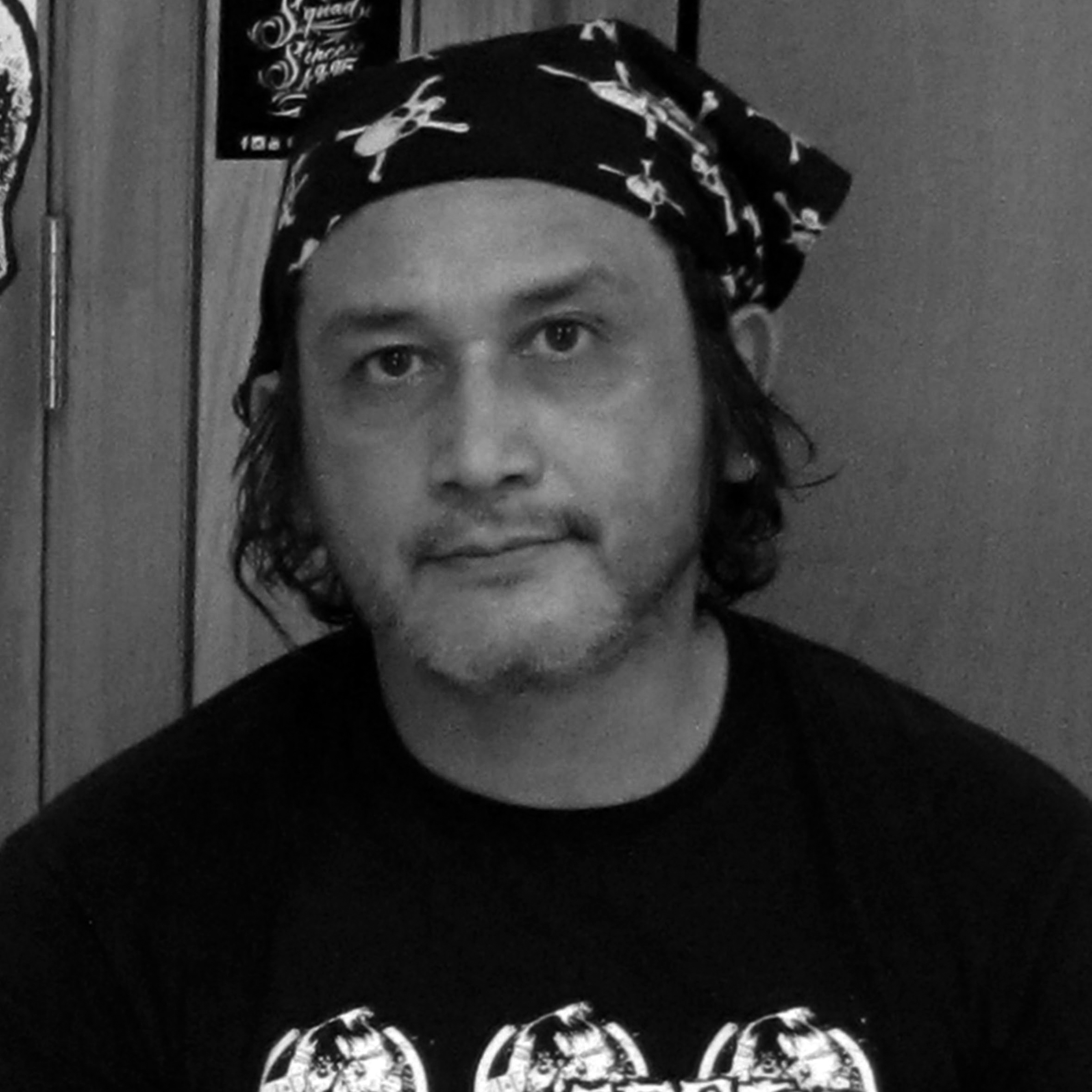
1. How do you define the Tijuana-San Diego region?
Besides sharing the same geography and climate, the Tijuana-San Diego area also faces similar challenges in terms of the economy and sociopolitical factors that define life on both sides of the border. In my own case, I am a Mexican designer and artist who lives in the United States, an artist who with two distinct perspectives on any one situation. The feeling of this crossroads allows me to take certain advantages like exploring concepts and putting them into practice. Finally, these conclusions allow me to pictorially represent this feeling.
2. How do you define your own work?
I work in two essential areas: graphic design and visual art; both areas are nurtured by urban culture. I try to maintain the design style with what I pictorially represent, based on interests like political activism, the independent music industry (which spans hip hop, indie, punk, or electronic music), also action sports like skateboarding or cycling and in general the promotion of products or services focused on the urban market.
3. How is the geographical context of the Tijuana-San Diego region reflected in your work?
My work is varied: from promoting Colectivo Nortec to what is now known as Street Art. Illegal street painting, informal events in independent spaces all the way to the CECUT or the Museum of Contemporary Art San Diego, readings at The Art Institute and decorating high-end residential spaces.

Growing up in Ensenada-Tijuana was a uniquely strange experience. Fairly removed to what is commonly considered as authentic; and being overwhelmed by California” influence, Gerardo came across underground subculture in the mid 1980s that became the outlet for my creativity and sociopolitical consciousness . Discovering”; also brought his interest to reach out and to network internationally.
Without feeling confined into geographical traps, he was able to gravitate freely, focusing on quirky and spontaneous nature of everyday life. Feeling the urge to testify and to record interpretations, he sought out to freeze ephemera, making the impermanent permanent, the intangible something anyone could grasp and hold onto.
Gerardo is interested in the exploration of mass produced waste and urban environments. He experiences its intervals and document alterations found in weathered mechanical patterns and compiles them into humorous poetic compositions. This is a healing process for him. Filtering emotions while using discarded materials represents a new contemporary identity of what it means to be Mexican, projecting a daring vision of self and the internal struggle, breaking the mold and creating a brave new example for future generations.